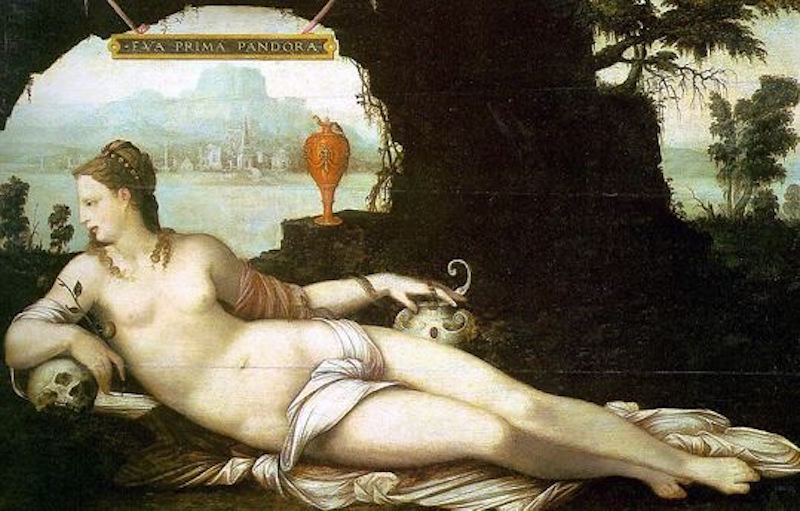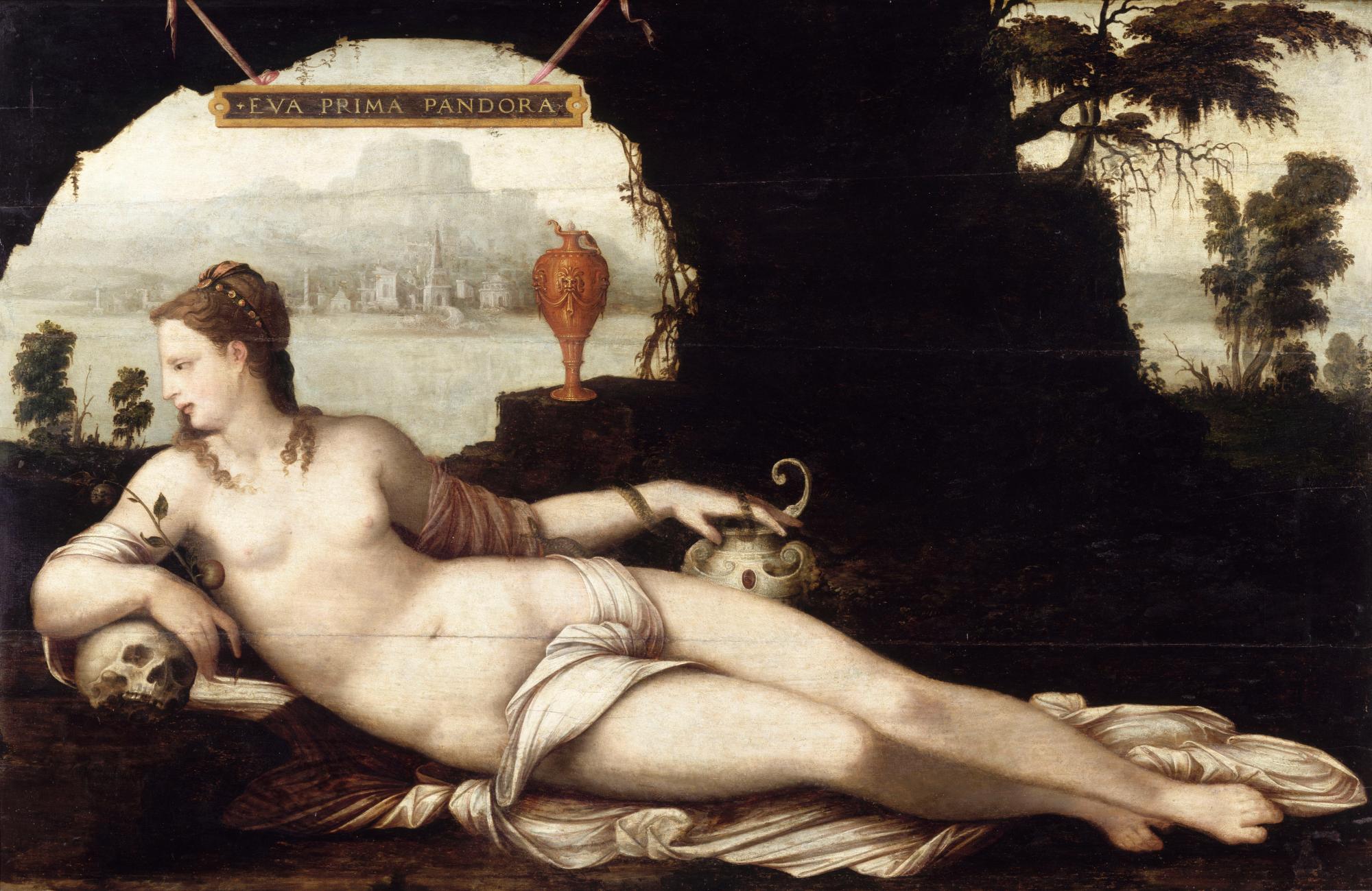This piece was found by Justyna, who is taking care of our social media and partnerships – do you follow us on Twitter and Facebook?). It is fantastic! I've never seen it in The Louvre (maybe because its collection contains 380,000 pieces), but it really deserves to be presented in DailyArt. Eve, guilty of original sin as related in the Book of Genesis, is here equated with Pandora; who, in Greek mythology, spread all the evils that have afflicted mankind by curiously opening the box entrusted to her by the gods. Indulging in a favorite intellectual exercise of the Renaissance humanists, Cousin leads his spectators towards a comparison: are there not striking similarities between the first sinner of the Judaeo-Christian tradition and the first woman modeled by Hephaistos? Both women disobeyed for the same motive: curiosity. Both were the source of all humanity's ills: as the skull (the symbol of the Vanities) indicates, the vase on which Pandora vainly places her hand has already released the plagues and disasters it should have held prisoner forever. This sensually imaginative representation of Eve, the first woman, offers an idealized female figure reclining against a dual backdrop: the untamed landscape on the right suggesting the meanders of the earthly paradise, and that on the left organized and dominated by man. Jean Cousin's inspiration here is clearly Italian: rigorous use of perspective, skilled organization of the pictorial space, bodily contours defined by subtle lighting from the left, the physical sensuality of the young woman, and the exquisite treatment of the jewelry and accessories. The architecture and the skull, reminiscent of Mantegna in their symbolic sophistication, are evocations of the ephemerality of life and earthly beauty. Little is known of the history of this work or of the circumstances behind its creation. The property of a Sens family originally from the same village as Jean Cousin, the painting was acquired by the Friends of the Louvre association and given to the museum in 1922.




Eva Prima Pandora
oil on canvas • 97 x 150 cm
 Jean Cousin le Vieux
Jean Cousin le Vieux